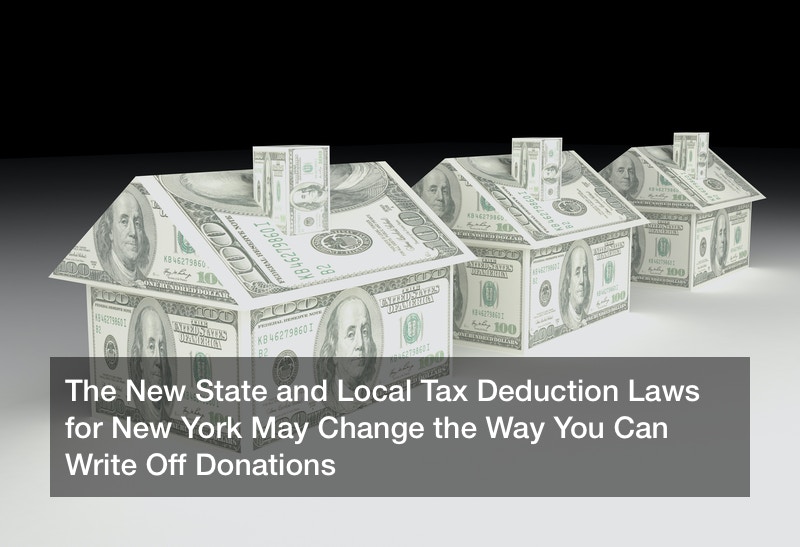
Before the new tax laws, any donation you made to a selected charity would be tax deductible for the value of the items you donated. Now, under the new 2018-2019 fiscal year tax laws, New York State will be the first to enact legislation addressing the $10,000 limitaation for state and local tax deductions.
The biggest impact the $10,000 deduction limitation will have is on the one-percenters. As of 2017, the personal income tax rate for New York State ranged between 4% and 8.82%., with New York City dwellers topping out at 7.7%. This year, that number jumps to 12.7%. This means that people with higher income will be paying even more in personal income taxes.
Under this new bill, the amount taxpayers can subtract from their taxable income without deductions on the tax return, itemizing, or listing will change. For example, the amount you can subtract will rise to $12,000 for individuals and $24,000 for married couples. This means that people who are close to the donation cut off point may stop donating altogether because they will no longer see tax savings from their giving.
It’s important to note the brunt of an individual’s tax payer dollars go toward medicare, medicaid, and CHIP at 26%, followed closely by social security at 24%. Another thing we might start to see is donations being pooled in certain years to beat the expanded standard amount so they can maximize their tax savings by itemizing. Earl Molander, retired business professor in Portland, Oregon, calls this actions “bunching.” Couples are predicted to only give and itemize their donations every other year. So, they will double up on donations one year, and skip out on donating completely the next year.
According to the New York Times, this method will save taxpayers who donate about $700 a year in taxes over the course of the next four years. What does this mean for charities and nonprofit organizations? They rely very heavily upon donations so they can continue to operate every year.
Cue the donor-advised funds. These funds allow people to donate money and take the tax deduction in the same year and then pay the money to their selected charity over time. This is almost like a pledged donation or an IOU, but they are still allowed to write off the whole amount on their tax return. Donors can make gifts of cash and securities, but they must assess whether they can afford to accelerate their donations or whether the acceleration would put a dent in their cash flow.
“A donor-advised fund is an ideal solution for this,” said Timothy M. Steffen, director of advanced planning at Baird’s private wealth management group.




